Properties
| Storage Buffer | PBS, 50% glycerol, 0.09% sodium azide *Storage buffer may change when conjugated |
| Storage Temperature | -20ºC, Conjugated antibodies should be stored according to the product label |
| Shipping Temperature | Blue Ice or 4ºC |
| Purification | Protein A purified |
| Clonality | Polyclonal |
| Specificity | Detects ~60kDa. |
| Cite This Product | HSP60 Antibody (StressMarq Biosciences | Victoria, BC CANADA, Catalog# SPC-105, RRID: AB_10807230) |
| Certificate of Analysis | 1 µg/ml of SPC-105 was sufficient for detection of HSP60 in 20 µg of heat shocked HeLa cell lysate by colorimetric immunoblot analysis using goat anti-mouse IgG as the secondary antibody. |
Biological Description
| Alternative Names | HSPD1, HSP60, 60 kDa heat shock protein, mitochondrial, Chaperonin 60, CPN60, HuCHA60, Heat shock protein family D member 1, GroEL homolog, mitochondrial, GROEL, HLD4, HSP 60, HSP65, SPG 13 |
| Research Areas | Cancer, Cell Signaling, Chaperone Proteins, Heat Shock, Organelle Markers, Protein Trafficking, Tags and Cell Markers |
| Cellular Localization | Mitochondrion, Mitochondrion Matrix |
| Accession Number | NP_002147.2 |
| Gene ID | 3329 |
| Swiss Prot | P10809 |
| Scientific Background |
HSP60, also known as Cpn60 or GroEL in prokaryotes, is a highly conserved molecular chaperone essential for protein folding and cellular homeostasis. Present in both prokaryotic and eukaryotic cells, HSP60 prevents protein misfolding and aggregation during biogenesis and under stress conditions. In mammals, HSP60 is localized to the mitochondria, where it partners with its co-chaperonin HSP10 to facilitate the proper folding and assembly of mitochondrial proteins. Structurally, HSP60 forms homo-oligomeric complexes of 7 or 14 subunits, exhibiting ATPase activity and reversible dissociation in the presence of Mg²⁺ and ATP. Its evolutionary conservation is underscored by the ability of human HSP60-HSP10 to functionally replace the bacterial GroEL-GroES system in engineered E. coli strains. Beyond its canonical role in mitochondrial proteostasis, HSP60 has been implicated in immune regulation and cellular stress responses. Elevated levels of HSP60 have been associated with several chronic diseases, including autoimmune disorders, coronary artery disease, diabetes, and neurodegenerative conditions such as Alzheimer’s disease and multiple sclerosis. In neuroscience, HSP60’s role in maintaining mitochondrial integrity is particularly significant, as mitochondrial dysfunction is a central feature of many neurodegenerative diseases. Its dual function in protein quality control and cellular protection positions HSP60 as a promising biomarker and therapeutic target in neurodegeneration research. |
| References |
1. Hartl, F.U. (1996) Nature 381: 571-579. 2. Bukau, B. and Horwich, A.L. (1998) Cell 92: 351-366. 3. Hartl, F.U. and Hayer-Hartl, M. (2002) Science 295: 1852- 1858. 4. Jindal, S., et al. (1989) Molecular and Cellular Biology 9: 2279-2283. 5. La Verda, D., et al (1999) Infect Dis. Obstet. Gynecol. 7: 64-71. 6. Itoh, H. et al. (2002) Eur. J. Biochem. 269: 5931-5938. 7. Gupta, S. and Knowlton, A.A. J. Cell Mol Med. 9: 51-58. 8. Deocaris, C.C. et al. (2006) Cell Stress Chaperones 11: 116-128. 9. Lai, H.C. et al. (2007) Am. J. Physiol. Endocrinol. Metab. 292: E292-E297. 10. Gao, Y.L., et al (1995) J. of Immunology 154: 3548-3556. 11. Neuer, A., et al (1997) European Society for Human Reproduction and Embryology 12(5):925-929. 12. Bason, C., et al (2003) Lancet 362(9400): 1971-1977. |
Product Images

Immunocytochemistry/Immunofluorescence analysis using Rabbit Anti-Hsp60 Polyclonal Antibody (SPC-105). Tissue: Heat Shocked Cervical cancer cell line (HeLa). Species: Human. Fixation: 2% Formaldehyde for 20 min at RT. Primary Antibody: Rabbit Anti-Hsp60 Polyclonal Antibody (SPC-105) at 1:100 for 12 hours at 4°C. Secondary Antibody: FITC Goat Anti-Rabbit (green) at 1:200 for 2 hours at RT. Counterstain: DAPI (blue) nuclear stain at 1:40000 for 2 hours at RT. Localization: Mitochondrion matrix. Magnification: 100x. (A) DAPI (blue) nuclear stain. (B) Anti-Hsp60 Antibody. (C) Composite. Heat Shocked at 42°C for 1h.
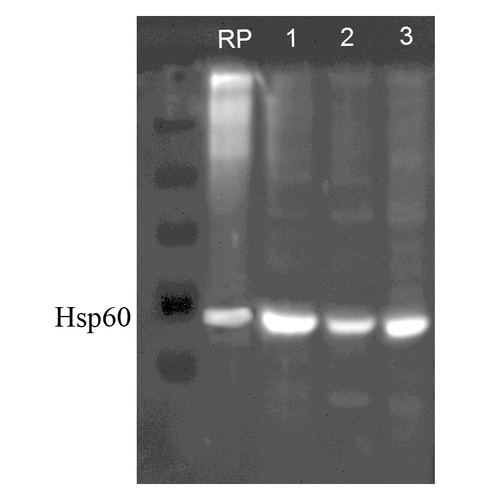
Western blot analysis of Human, Dog, Mouse SKBR3, MDCK, and MEF cell line lysates showing detection of HSP60 protein using Rabbit Anti-HSP60 Polyclonal Antibody (SPC-105). Lane 1: Recom. Human Hsp60 (100ng), Lane2, 3 and 4: SKBR3 lysate (human), MDCK lysate (dog) and MEF lysate (mouse) (al at 7.5ug). Primary Antibody: Rabbit Anti-HSP60 Polyclonal Antibody (SPC-105) at 1:1000.

Immunocytochemistry/Immunofluorescence analysis using Rabbit Anti-Hsp60 Polyclonal Antibody (SPC-105). Tissue: Heat Shocked Cervical cancer cell line (HeLa). Species: Human. Fixation: 2% Formaldehyde for 20 min at RT. Primary Antibody: Rabbit Anti-Hsp60 Polyclonal Antibody (SPC-105) at 1:100 for 12 hours at 4°C. Secondary Antibody: APC Goat Anti-Rabbit (red) at 1:200 for 2 hours at RT. Counterstain: DAPI (blue) nuclear stain at 1:40000 for 2 hours at RT. Localization: Mitochondrion matrix. Magnification: 20x. (A) DAPI (blue) nuclear stain. (B) Anti-Hsp60 Antibody. (C) Composite. Heat Shocked at 42°C for 1h.

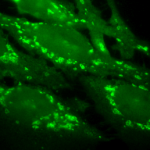

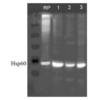
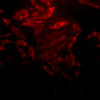
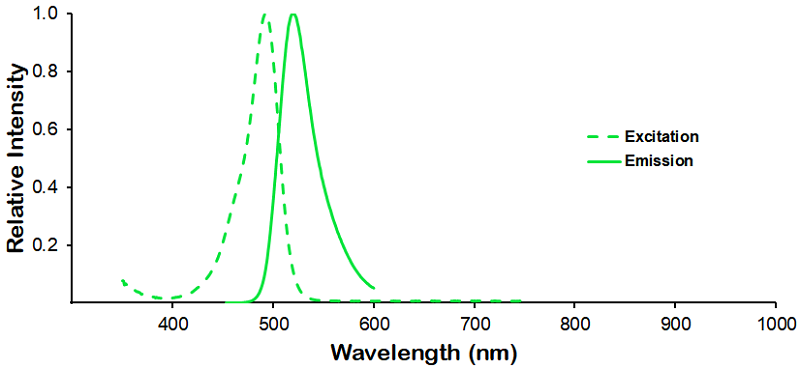
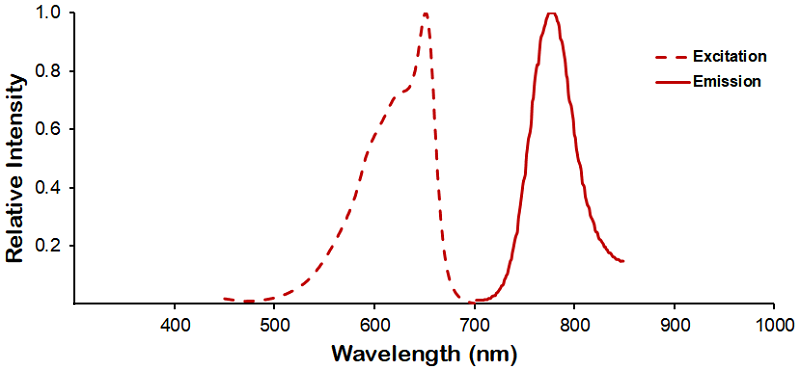
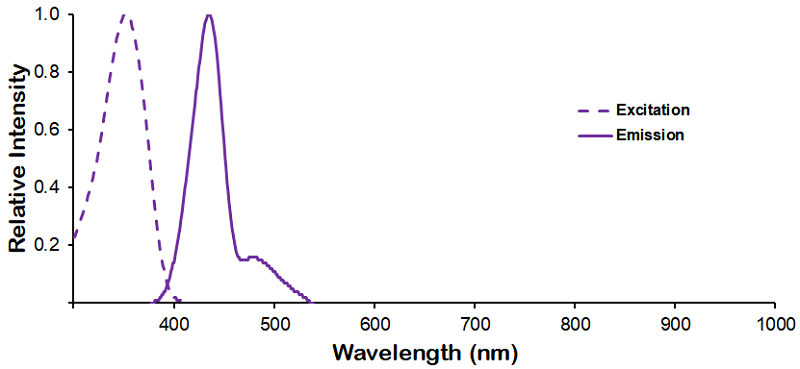
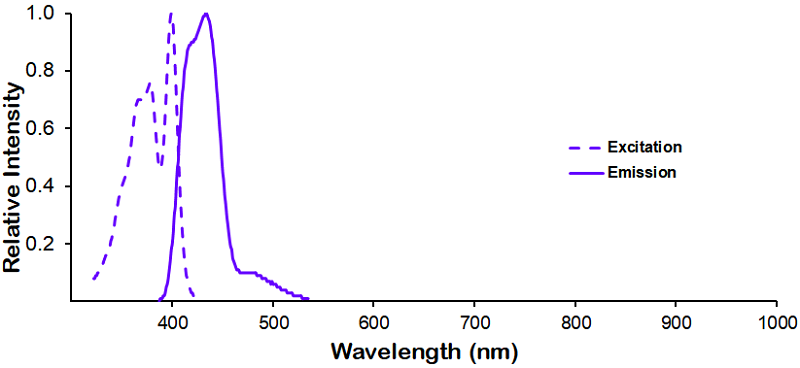
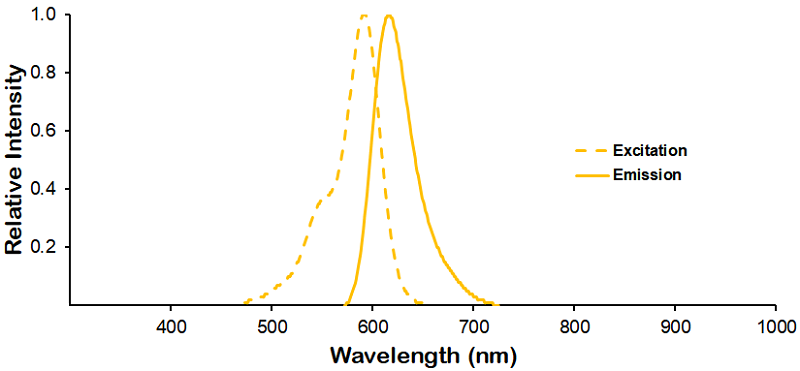

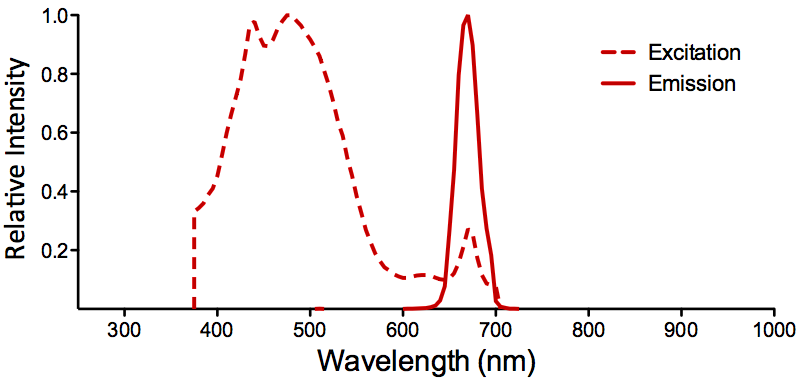
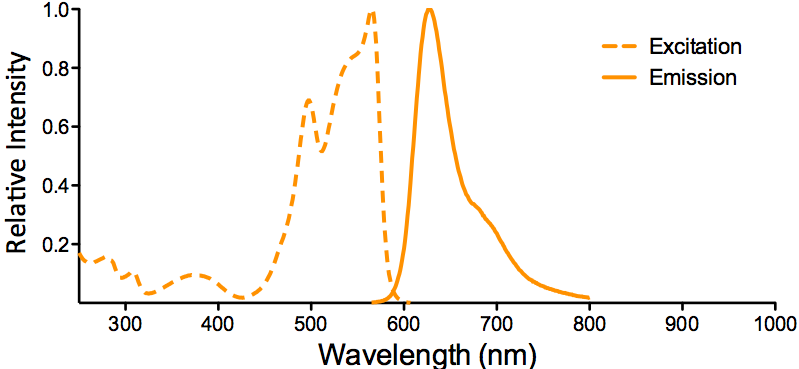
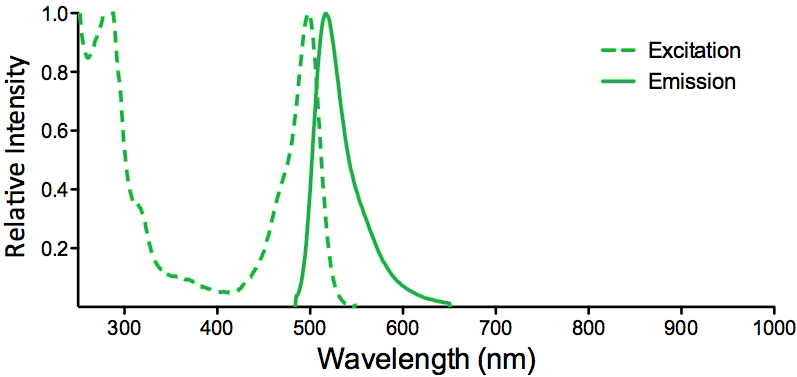
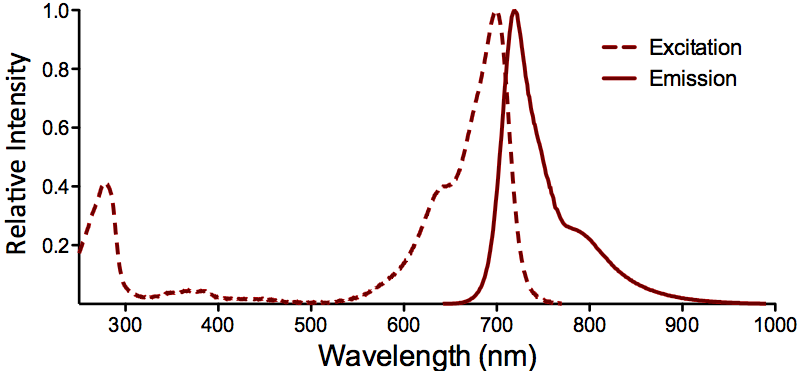
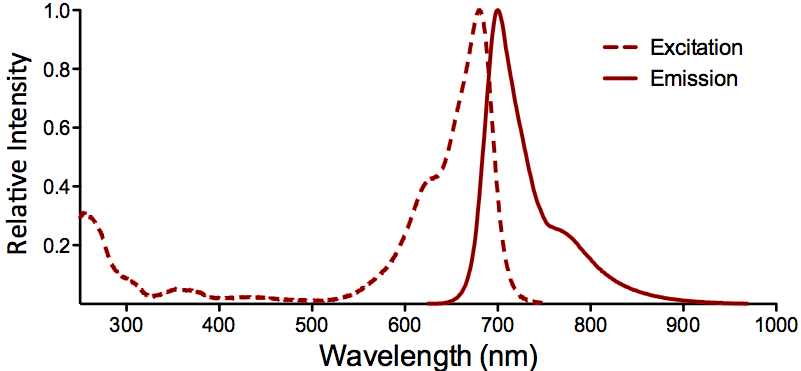

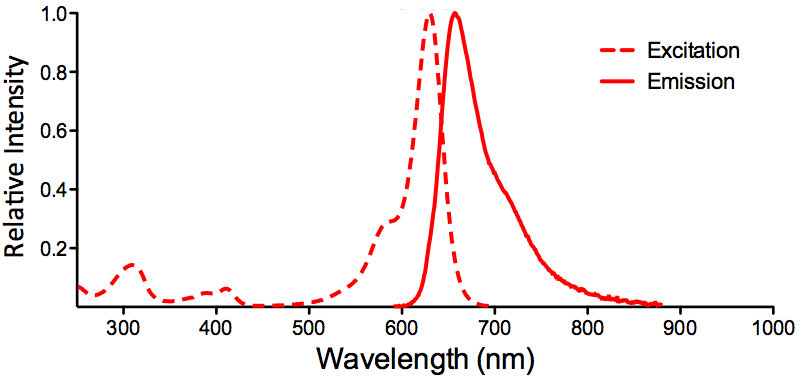
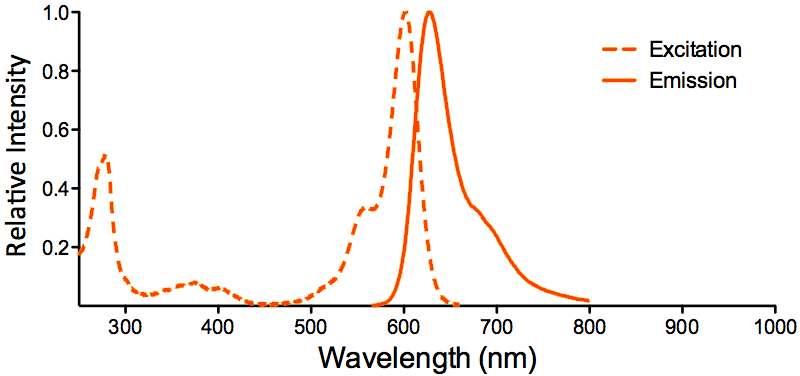

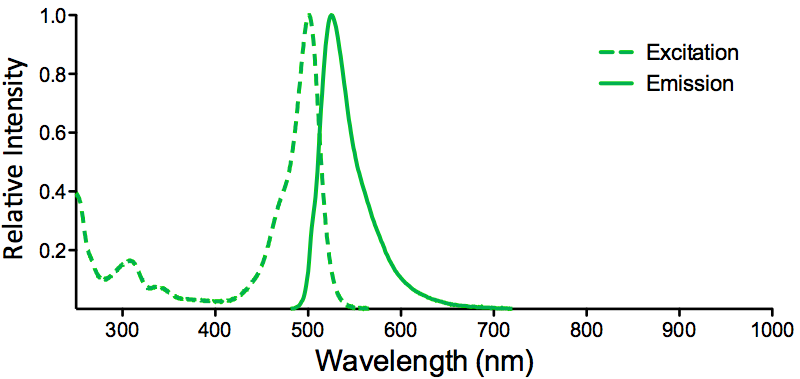
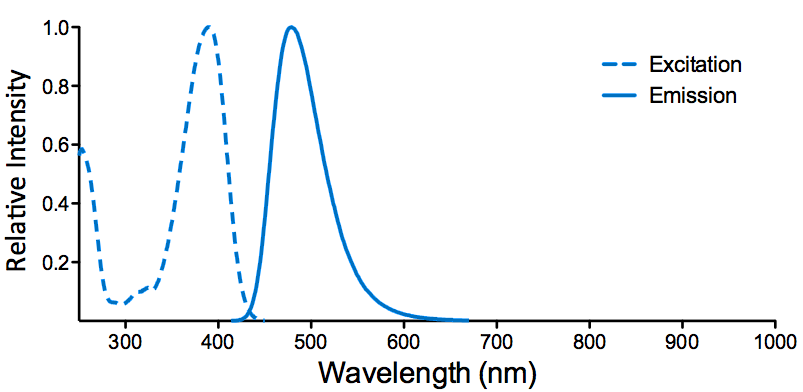
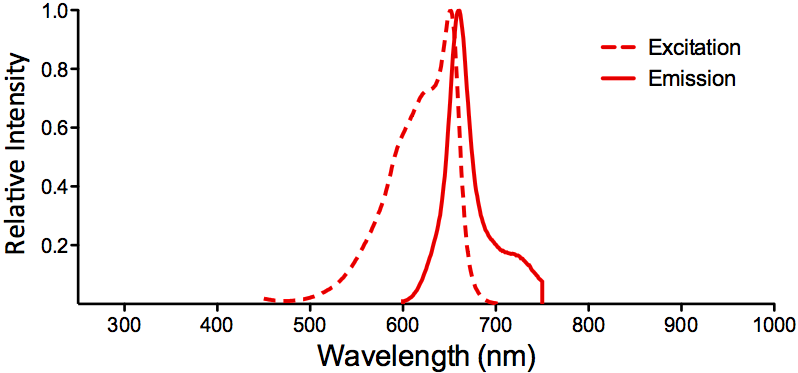
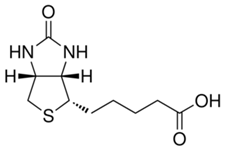
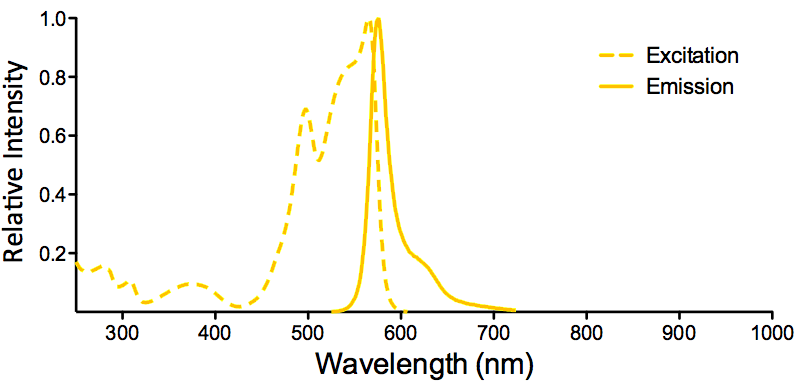
StressMarq Biosciences :
Based on validation through cited publications.